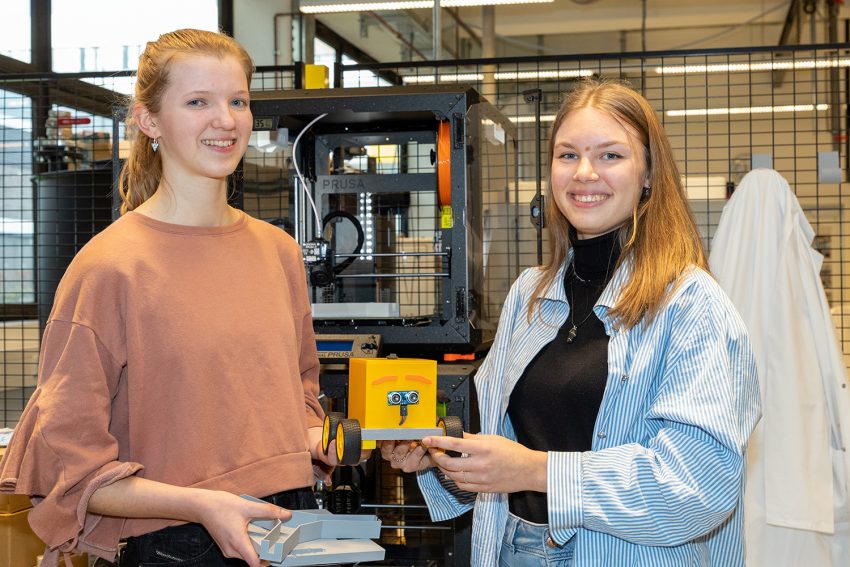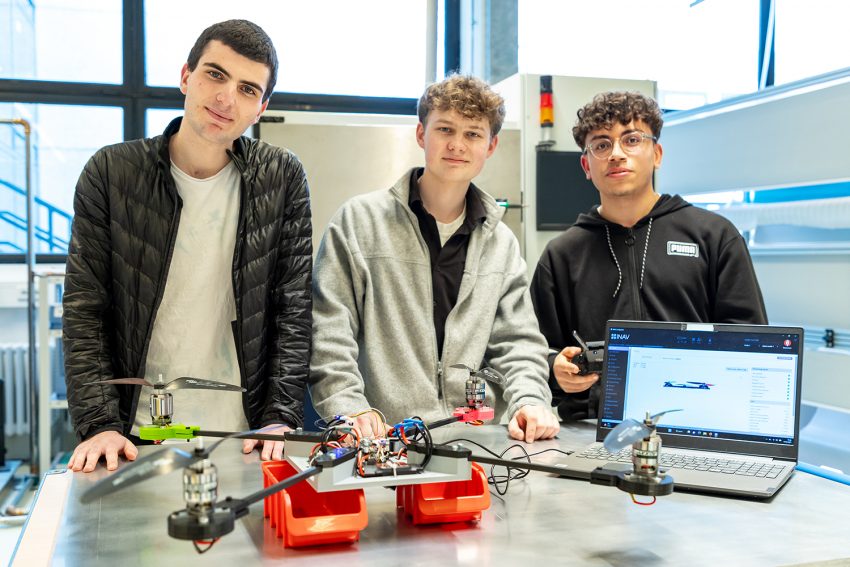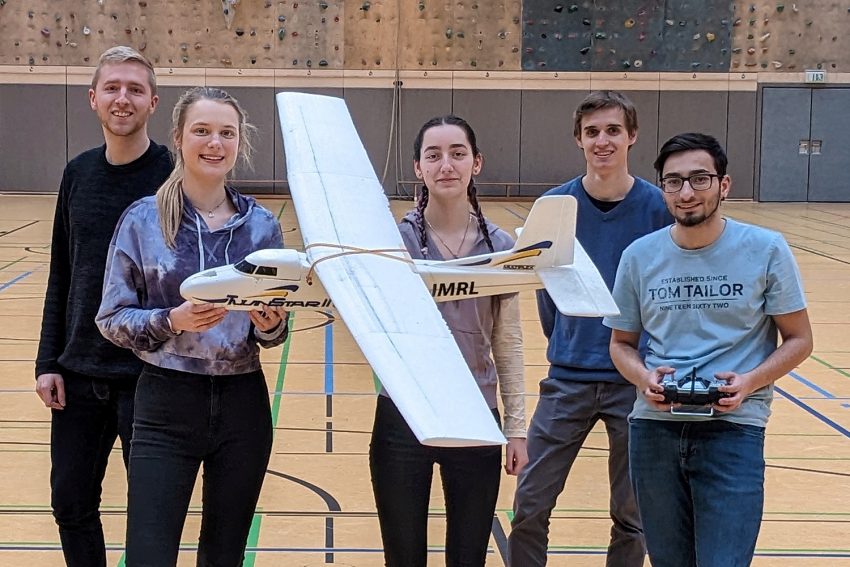From concept to prototype Students of the research club "changING" of the Cluster of Excellence SE²A presented their projects
After four years of successful participation, students from the first cohort of the changING research club of the cluster of excellence SE²A – Sustainable and Energy-Efficient Aviation – at TU Braunschweig have demonstrated how lofty plans can be turned into successful projects. To conclude their research activities, they presented their projects – from a drone to a hoover robot and a wing for a model aircraft to an economic model for the use of an unmanned aerial vehicle.
Ever heard of HAPS? The abbreviation stands for High Altitude Pseudo Satellites. These are high-flying unmanned platforms that operate in the stratosphere. Anna Gesine Lübke from the Gymnasium Martino-Katharineum in Braunschweig wanted to know more and developed an economic model for the operation of HAPS for comprehensive mobile network coverage at the Institute of Flight Guidance at TU Braunschweig. She received support from research associate Andres Arango.

Award-winning: Anna Gesine Lübke presents her economic model for the operation of High Altitude Pseudo Satellites at Jugend forscht. Photo credit: Ole Dannemeyer
With the help of weather data-supported simulation calculations and on the basis of a systematic, technical-economic analysis of the expected investment and operating costs, she has succeeded in evaluating the availability of the network that can be achieved with this technology and comparing it with conventional technologies. An ambitious project with which the Abitur student secured third place in the technology category in the Land competition Jugend forscht in Clausthal-Zellerfeld and for which she also won numerous special prizes.
“That’s what makes the quality of the changING research club so special. The students experiment very independently and learn about their skills in their research projects by being able to solve even complex tasks on their own,” says M.Sc. Dina Al-Kharabsheh, research associate at the Institute for the Didactics of Natural Sciences at TU Braunschweig.
A vacuum cleaning robot from the 3D printer
The changING research club aims to strengthen interest in STEM courses and technical topics, especially among girls. The Braunschweig schoolgirls Lena Hage and Carlotta Kohn from the Ricarda-Huch-Schule Gymnasium and Elisabeth Bittner from the Wilhelm-Gymnasium were already interested in these subjects. Their research project: a vacuum cleaning robot. “It was a challenge to even get the self-developed robot to drive around at all,” Lena Hage sums up.

Successfully got their robot from the 3D printer to move: Lena Hage (left) and Carlotta Kohn. Photo credit: Kristina Rottig/TU Braunschweig
The start of the complex project work was already a challenge: How do you get started with such a project? What are the first steps? “The scientific staff at the Institute for Mechanics and Adaptronics were enormously helpful, we could pester them with questions at any time,” recalls Carlotta Kohn. “We also learned practical skills like soldering. It’s cool to be able to do that now.”
Even more important than getting involved in the project was sticking with it. After all, research also means reaching limits, revising concepts and reorienting the project. “In the beginning, we had the plan to develop a robot that could climb stairs on its own,” says Lena Hage. There wasn’t enough time for that by the time the project was finished, but at least their robot from the 3D printer drives around and avoids obstacles autonomously – a great success for the young researchers.
Drone developed, manufactured and launched into flight
“We went through all the phases of a research project – from concept to prototype,” reports Thomas Mohr, who together with Lev Lekush and Hamza Touati – all three of whom attend Wilhelm Gymnasium – developed, manufactured and successfully got a drone to fly. “We tried to teach ourselves as much as possible,” recalls Lev Lekush. “Only when we were really stuck did we ask the experts.”

Successful teamwork in the development and production of a flyable drone (from left): Lev Lekush, Thomas Mohr and Hamza Touati. Photo credit: Kristina Rottig/TU Braunschweig
For example, research associate Hendrik Traub from the Institute for Mechanics and Adaptronics at TU Braunschweig: “I’m thrilled by the high level of motivation shown by the students in the changING research club.” The three Abitur students not only spent afternoons developing their drone together at the institute, but also kept tinkering with details at home. “The goal was to use the drone to transport packages. But we realised that such a project requires much more time. However, we were able to show in successful flight tests that our drone actually flies,” says Hamza Touati.
Successful flight testing of a model aircraft wing
The flight test of a model aircraft, for which a changING research team designed the wing, was also successful. The team includes students Stephanie Bittner, Hannah Ameer, Lisa Marie Scharp and Taner Topkaya from Wilhelm Gymnasium. They were supported by the research associates Christian Breitenstein and Ralf Wokoeck from the Institute for Fluid Mechanics at TU Braunschweig.

Successful flight test with the self-designed wing for a model aircraft (from left): Philipp Seelemeyer from Akamodell Braunschweig, the young researchers Stephanie Bittner and Hannah Ameer, the research associate Christian Breitenstein and young researcher Taner Topkaya. Photo credit: Thomas Müller
Afterwards, the young researchers went to the Akamodell Braunschweig workshop at the Institute of Aircraft Design and Lightweight Structures. Under the guidance of Philipp Seelemeyer, the wing was built and mounted on a model aircraft fuselage, which the student model building group Akamodell Braunschweig provided, as well as the remote control. Flight testing took place in the Beethovenstraße gymnasium.
“In addition to the basic aspects of flight control, we particularly investigated the influence of the position of the centre of gravity on the stability of the flight dynamics, the rudder deflections required for a stationary flight and the flight performances,” reported the research team. “The tests were a nice conclusion to a successful project.”

